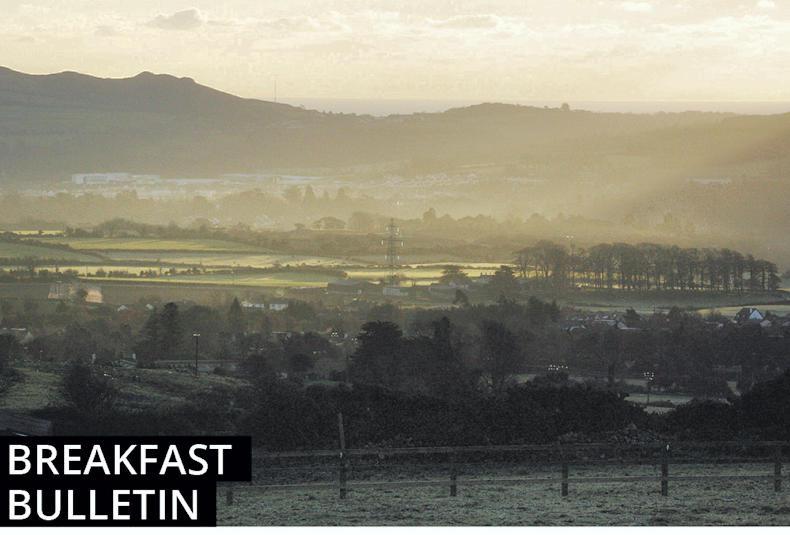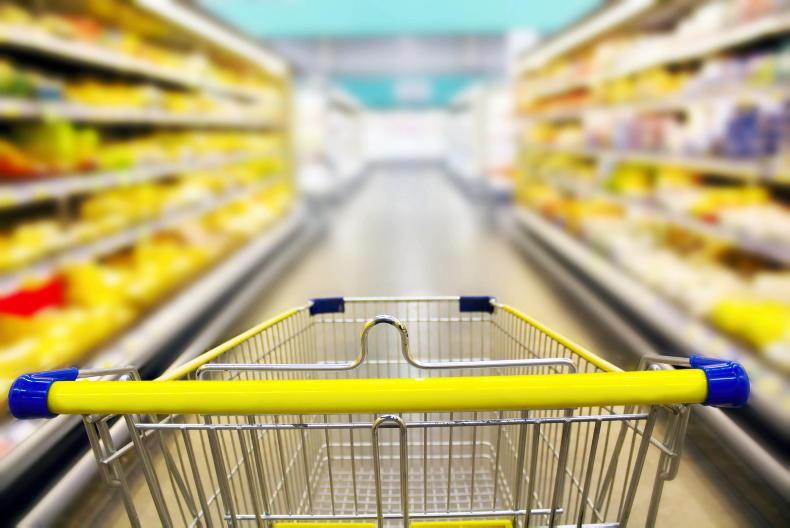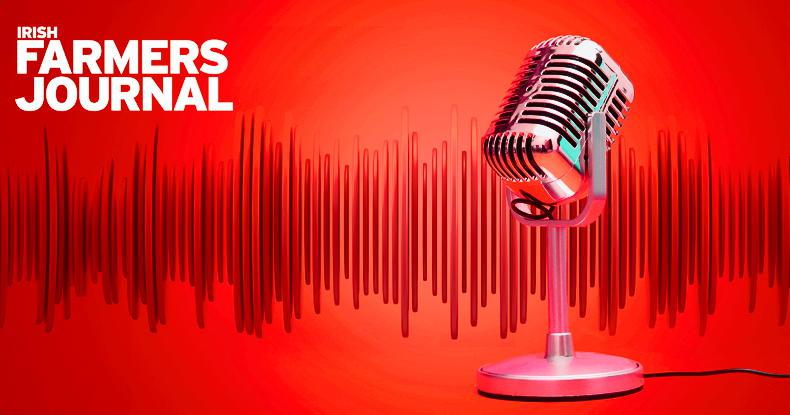At the beginning of May while I was in Germany the word from back home was that rivers were flooding and fields were poaching. Yet in a dry, warm countryside 100km either side of Munich I did not see one beast out in fields full of grass. Acres of solar panel tablets were about the only black things I could see dotted around the fields.
The cattle were there OK, but all were indoors and will stay indoors for their natural life. This is typical of much of continental Europe.
Is it that the German need for order and control puts them off grazing grass like we do in Ireland?
I put these and other points to two dairy farmers who were growing their business German-style. They surprised me by saying that they can live with a milk price that has nosedived from over 40c/litre to about 30c/litre.
FARM 1 Paulus
The father and son team, both called Hans Paulus, are the only commercial farmers left in the village of Weissenkirchen about 100km northwest of Munich. They own 25ha and rent another 50ha or so from the landowners in the village who work off-farm. Like every farmer in the region, they also own forestry – about 8ha.
Our German friends, neighbours of the Paulus family, described them as grafters, perfectionists and non-stop workers. Hans senior, who is 80 years old, can recall US planes dropping Colorado beetles to prey on his family crops nearing the end of World War II. His granddaughter Michaela tends her rabbit meat unit before and after school.
I was gobsmacked on entering their €500,000 cow barn built in 2007 to replace the tie-up byre. One side housed the milking parlour/dairy and cubicles and slats for 65 cows. On the other side were the dry cows and replacement heifers of all ages. Every animal was a red-and-white fleshy (often quite fat) dual-purpose Fleckvieh (Simmental). These unlikely-looking dairy cows suggested beef rather than milk but no. Hans, a pedigree breeder using all AI, has been milk recording for over 40 years and in 2014 had a herd average of just over 9,000 litres per cow. This has grown consistently from 4,000 litres per cow in 1970. In 2002 the average was 6,006 litres/cow, so most of the yield lift has been recent. Fat and protein levels in the Fleckviehs are high – 4.3% protein and 4.6% fat was on one return I was shown.
Along with breeding, a change of total mixed ration (TMR) is credited with upping the yields. In as far as possible the rations are homegrown. Maize silage, grass and lucerne silage, plus straw and concentrates. Tower silos have given way to indoor bunks but the silage is extracted with minimal pitface disturbance. First-cut silage was already under way on May 12. Top quality is paramount. Would Hans consider putting out cows to graze this grass instead of ensiling? “No. Grazing is too unstable. Summers here are too dry. Cow yield would be disastrous. Grazing wouldn’t be practical,” he said.
I estimate that the Paulus cows eat over 3t of concentrate per head a year. But this does not look too outlandish in the context of growing cereals at about €130/t and a cow lactation output of over €4,000 a head last year, which should still exceed €3,000 a head this year in spite of the lower milk price. Spring 2015 milk price in Bavaria based on 4% fat and 3.4% protein was 32.0 c/litre, back 21.3% on spring 2014.
Hans Paulus junior said he needs 32c/litre for milk for him to stay in business. With himself and his father having spent €260,000 on purchasing quota between them, he now regrets its abolition.
His scope for expansion is limited by accommodation. Their €500,000 65-place cow barn plus slurry facility was financed with a grant of €70,000 plus a loan of €370,000 at 2% interest. But this unit is practically full. Also he doesn’t see great scope for further yield increase. Changing breed type is a no-no for the older Hans Paulus.
Already all of the bull Fleckvieh calves are beefed on farm as entire bulls. Again, the bulls are never let out to graze. Early on the young bulls are haltered in the old cow byre. Later they are finished in small groups on slats and fed a TMR. The target is to get the bulls to about 750kg liveweight (400kg to 420kg carcase weight) at 18 to 20 months. They expect to realise about €3.80/kg excluding VAT for these mostly R+ and maybe U- carcases. Flat-rate VAT refund for farm sales in Germany is 7%.
Cows calve all year round. Because of a high twinning rate, the Paulus family expects to have at least a calf per cow per year. Again, with the high value of the cull Fleckvieh cow, fast cow turnover is not seen as an issue.
The Pauluses are paying from €500/ha to €800/ha annually for their rented land. They would love to buy more but “Germans do not sell land.” In the meantime, just in case he has time on his hands, Hans Paulus junior is developing a contracting business with another like-minded farmer where they share a machinery pool. With grass plots cut at least four times a year, it’s not a surprise that most of their contract work is in silage making.
FARM 2 Mayer
Hans Mayer, farming in Schirndorf, Kallmünz, Bavaria, would be seen as a mover and shaker in any country. Starting out with a small dairy unit 40 years ago, he and his sons now run a 120-cow dairy enterprise, an on-farm meat business and an anaerobic biodigester (in this he is like over 2,200 other German farmers).
Hans and his son Thomas now farm 230ha, of which 45ha are owned. The balance is either leased or share-farmed with owners who work off-farm in a local BMW factory. Rental is costing upwards of €500/ha/year. He has 12ha of forestry.
Like the Paulus family, the Mayers farm dual-purpose Fleckvieh cows, bringing all the bull calves to beef. Nothing sees the outside of a shed until leaving the farm.
Hans Mayer welcomes the abolition of milk quotas and plans to increase herd size from 120 to 150 cows. His biggest constraint is in getting milking staff. So much so that he is contemplating copying his neighbours and installing a couple of robotic milking machines.
Otherwise his dairy philosophy is to keep costs down. “Money spent on buildings and machinery is dead money. Holstein cows are too complicated and lack robustness.” He aims to produce about 7,000 litres per cow based on about 1.2t concentrate per cow per year. In as far as possible the TMR diet is homegrown and includes rape as a protein source. Hans Mayer reckons that he can survive OK on a milk price of 27c/litre. His milk is sold to the Bayerland Co-op owned Domspitz milk plant in Amberg, where it is processed into Parmesan cheese for Italy.
He also reckons that his indoor beef enterprise is profitable at a selling price of €3.75 to €3.80/kg (ex VAT) for bull carcases of 360kg to 400kg at 14 to 16 months. Indeed, he was disappointed that of 137 calves born last year 88 were heifers. Cull cows sell at €3.40 a kg ex VAT.
One bull per week plus 10 home-reared pigs are dedicated to an on-farm slaughter and meat business operated by his son Christian and family. “Farming investment costs are high but meat equipment is worse,” said Hans, who has already sunk well over €1m into this venture. The investment includes a smoke room, sausage and salami making gear, and a mobile refrigerated van to complement the farm shop.
So far, the Mayers have no regrets about their venture into farm butchering and meat sales. Lamb meat, some of which comes from Ireland, has been added to the product range.
Hans reckons that the meat venture is already a bigger earner for the family than their third major enterprise – the anaerobic biodigester. This unit, installed in 2009 after an investment cost of €1.1m, depends on subsidy and reflects the German preoccupation with alternatives to fossil fuels. Consumers pay an extra 6c/kw for electricity to subsidise alternatives such as wind turbines, solar panels and biodigesters.
Through the national grid the unit can produce electricity to energise 530 local households and could handle another 40 houses if they were available.
Along with slurry the feedstock includes maize silage, grass, grass silage plus other feed waste. Growing maize silage for biodigestion is major business in Germany but is causing controversy with the non-farming sector. The Mayers can select the best silage for their animals. Spoiled material and pit sides and ends etc go into the digester. The waste material from digestion still has its fertiliser value and is recycled on the farm.
Hans is actually planning a further €1m investment in the biodigester which will enable him to deliver the electricity into the grid in the hours when demand and prices are at their highest.
In addition to his many other roles, Hans is a regional farm leader familiar with the EU in Brussels. He looks forward to meeting new Irish EU Farm Commissioner Phil Hogan, saying that he has to be better than his predecessor, the “socialist from Romania”, under whose regime Hans’s Single Farm Payment has reduced to €300/ha. He said German farmers are very aware and uneasy about Ireland’s plan for a 50% increase in milk by 2020.
Kerrygold premium
“I’d prefer if Ireland sold less Kerrygold butter and more Jameson whiskey in Germany,” said Hans Mayer, showing a familiarity with Irish food brands. I checked for Kerrygold in a rural Lidl supermarket. Sure enough there it was selling for €1.79 per 250g. In contrast, Bavarian butter from the same shelves was selling from €0.99 to €1.29 per 250g. Presumably the grazed grass content in the diet of Irish cows is a factor Kerrygold’s popularity.
Overall German butter’s average wholesale price was €3.76/kg in spring 2015 compared to a peak of €5.20/kg in 2013.
Forestry
My host in Germany had a career in state forestry in Bavaria, where 30% of the land area is under forestry. This forestry is owned 40% by farmers, 40% by the state and 20% by local authorities. On a visit to Ireland last summer my host was not impressed with how Irish forests are managed. He reckoned that in general Irish forests are under-thinned and that thinning is not used to encourage the more promising plants.
Germany v Ireland
Generally consumer prices in Bavaria are lower than in Ireland, sometimes substantially so.















SHARING OPTIONS